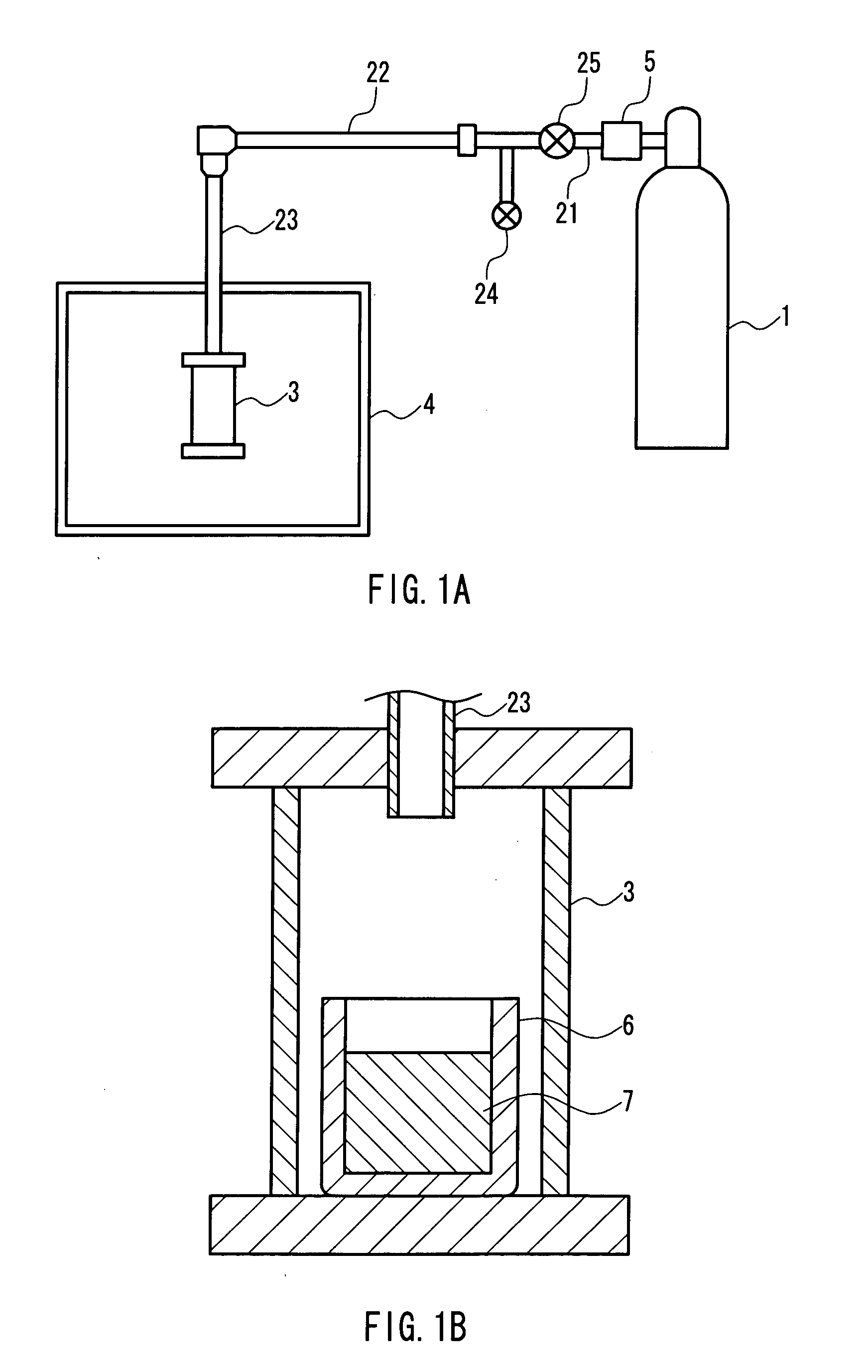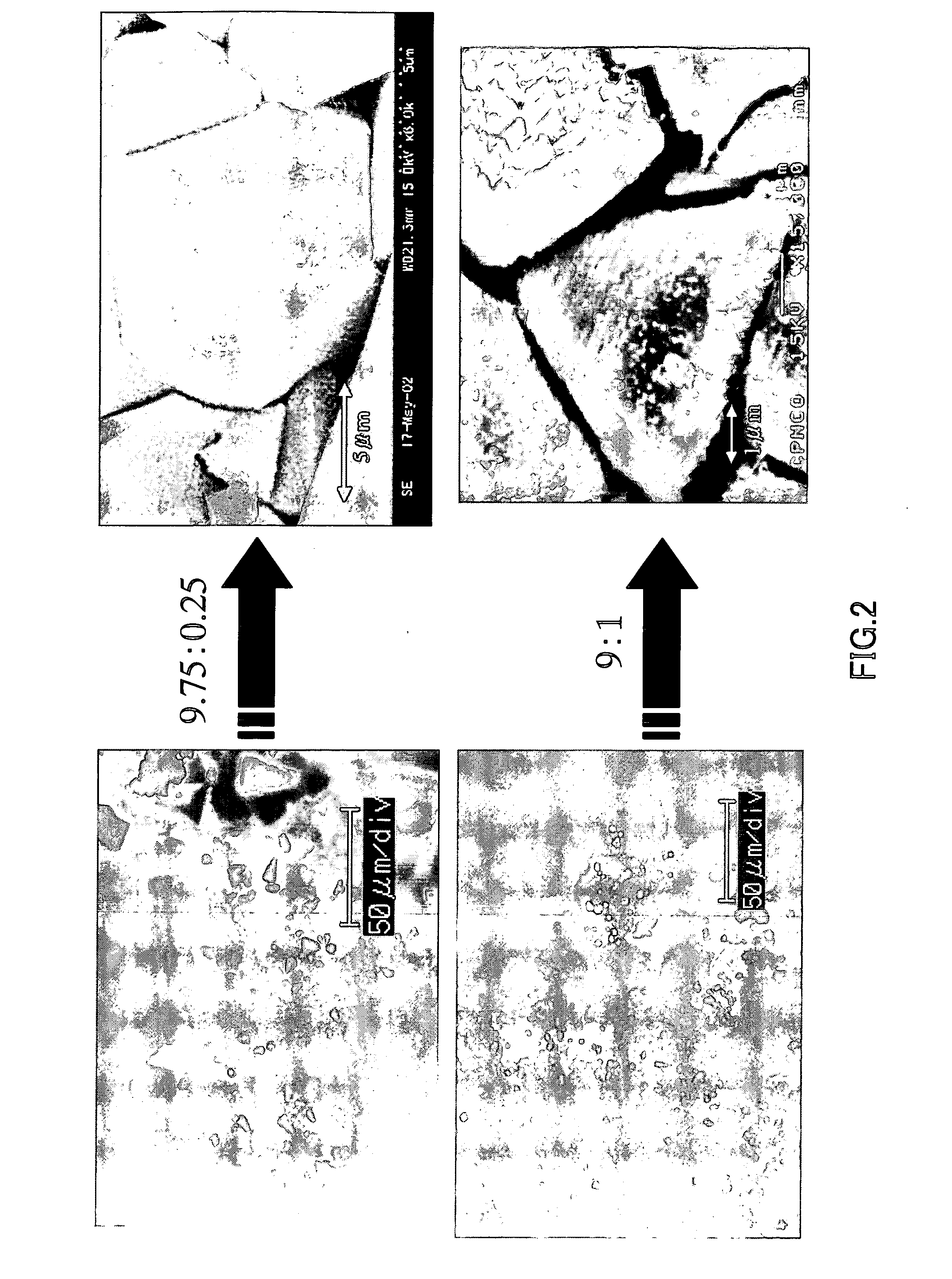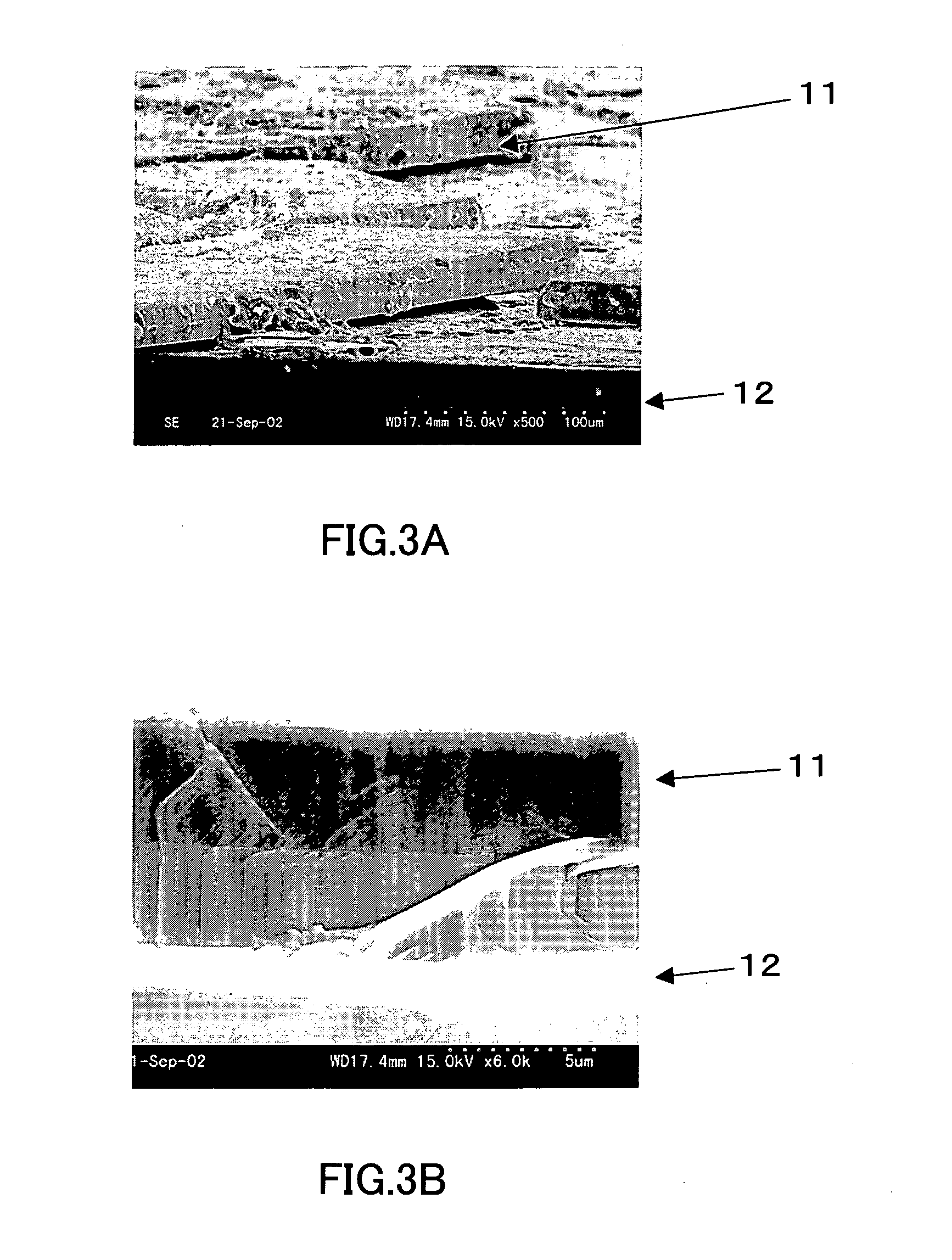Method for producing group III element nitride single crystal and group III element nitride transparent single crystal prepared thereby
a technology of group iii element and nitride, which is applied in the direction of polycrystalline material growth, crystal growth process, chemistry apparatus and processes, etc., can solve the problems of further reduction, quality problems, and the conditions required by this method are still stringent, and achieve large bulk-sized gallium nitride, high quality, and high quality
- Summary
- Abstract
- Description
- Claims
- Application Information
AI Technical Summary
Benefits of technology
Problems solved by technology
Method used
Image
Examples
example 1
[0054] Using the apparatus shown in FIG. 1, single crystal of gallium nitride was produced in the same manner as described above. More specifically, gallium, sodium, and calcium were put in a BN crucible, and then they were melted by being pressurized and heated under the following conditions in a nitrogen (N2) gas atmosphere so as to grow single crystal of gallium nitride. In the present example, the sodium and the calcium were blended so as to have the following six different blend ratios.
(Producing Conditions)
[0055] Growth temperature: 800° C.
[0056] Growth pressure (N2): 30 atm (3.04 MPa)
[0057] Growth period: 96 hours
[0058] Crucible used: BN crucible
(Blend Ratio)
[0059] With respect to 1 g of gallium (Ga), sodium (Na) and calcium (Ca) were blended so that they were present at the ratios indicated in the following table.
Sample No.Na:Ca (mole ratio)Na (g)Ca (g)1.9.75:0.250.859560.0384222.9:10.793440.1536883.8.5:1.50.749360.2305314.8:20.705280.3073755.7.5:2.50.66120.384219...
example 2
[0065] Gallium nitride single crystal was produced at a growth pressure (N2) of 15 atm. In the present example, sodium (Na) and calcium (Ca) were blended so that 0.74936 g of sodium (Na) and 0.153688 g of calcium (Ca) (Na:Ca=9:1) were present with respect to 1 g of gallium (Ga). Except for the above, the gallium nitride single crystal was produced in the same manner as in Example 1. As a result, the amount of the gallium nitride obtained was 0.06902 g.
example 3
[0066] A rectangular sapphire substrate (4 mm×15 mm with a thickness of 0.3 mm) on which a thin film (thickness: 3 μm) of gallium nitride single crystal had been formed was provided. The substrate was placed in a BN crucible (inner diameter: 19 mm, depth: 5 mm), and gallium (Ga), sodium (Na), and calcium (Ca) further were put in the BN crucible. The BN crucible was then set in the pressure- and heat-resistant container in the apparatus shown in FIG. 1. Thereafter, nitrogen gas was supplied to the container, and the container was heated so that gallium nitride single crystal was grown on the thin film. The conditions for the crystal growth were as follows. FIG. 3 shows SEM photographs of the thus-obtained single crystal.
(Producing Conditions)
[0067] Growth temperature: 800° C.
[0068] Growth pressure: 30 atm (3.04 MPa)
[0069] Growth period: 24 hours
[0070] Na:Ca=9:1 (mole ratio with respect to 1 g of gallium)
[0071] In FIG. 3, FIG. 3A is a SEM photograph at 500× magnification and FI...
PUM
 Login to View More
Login to View More Abstract
Description
Claims
Application Information
 Login to View More
Login to View More - R&D
- Intellectual Property
- Life Sciences
- Materials
- Tech Scout
- Unparalleled Data Quality
- Higher Quality Content
- 60% Fewer Hallucinations
Browse by: Latest US Patents, China's latest patents, Technical Efficacy Thesaurus, Application Domain, Technology Topic, Popular Technical Reports.
© 2025 PatSnap. All rights reserved.Legal|Privacy policy|Modern Slavery Act Transparency Statement|Sitemap|About US| Contact US: help@patsnap.com



